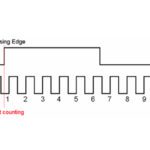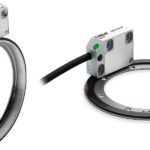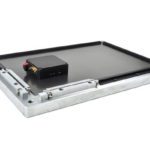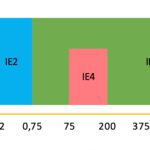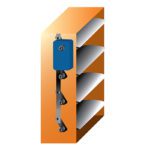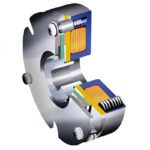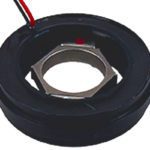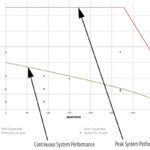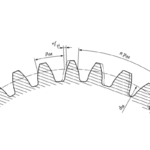Encoders and resolvers are used to track the angular or linear position of an object, such as a motor shaft (angular measurement) or a linear actuator (linear measurement). And with the addition of a clock signal, encoders and resolvers can also be used to measure the speed of the object. A resolver uses a rotor with […]
What’s the difference between radial and axial ring encoders?
A traditional rotary encoder measures the position or speed of a rotating shaft, with mounting via a coupling or a hollow bore that allows the encoder to fit over the shaft. But not all rotating components have a shaft to which the encoder can mount. For example, direct-drive rotary motors — also known as torque motors, […]
What are Sawyer motors and where are they used?
Originally named for Bruce Sawyer, who patented the design in 1968, Sawyer motors are a type of planar motor, and are sometimes referred to as “dual-axis linear stepper motors” since they use stepper motor technology and the moving part can travel in both the X and Y directions. Like other planar motor designs, Sawyer motors […]
Updated MEPS: Regulation (EU) 2019/1781 for motors and drives takes effect in July 2021
In 2011, the EU implemented minimum efficiency performance standards (MEPS) for electric motors used in residential, commercial, and industrial applications with Commission Regulation (EC) 640/2009, which was implemented in three stages through 2017, and its amendment Regulation (EU) 4/2014. In October 2019, Regulation (EC) 640/2009 was replaced with Commission Regulation (EU) 2019/1781, which outlines updated efficiency […]
Customized and reliable stepper motors address HVAC damper application extremes
In any HVAC (heating, ventilation, and air conditioning) system, dampers are used to regulate airflow inside the ducts. In some systems, manual dampers allow personnel to turn a handle on the outside of a duct. But if you have to regulate airflow on a constant basis, you’ll need automatic dampers with electric or pneumatic motors […]
What are electromagnetic power-off brakes and where are they used?
Power-off brakes are commonly used in motion control applications for stopping or holding a load (or both), especially on vertical axes or for emergency stop functionality in servo applications. Power-off brakes are so named because the brake is engaged when power is removed from the system — either intentionally or accidentally. (Power-off brakes are also […]
Low-profile kit-style limited angle torque motor
The TMR-075-16-001-2 limited angle torque motor utilizes a toroidally wound, stationary coil assembly with a two-pole permanent magnet rotor to generate torque. The rare earth permanent magnet rotor always has an even number of poles, with two to six poles. The maximum angular excursion with a two-pole rotor is 180º, but the torque will drop […]
What is Single Pair Ethernet (SPE) and how is it used in industrial applications?
Single Pair Ethernet (SPE) is a technology that provides Ethernet transmission over a single pair of copper wires, while also transmitting power to connected devices via Power over Data Line (PoDL). Single Pair Ethernet was initially developed to meet the demands of the automotive industry — smaller, lighter cables and connectors for transmitting data from […]
How to calculate continuous and peak torque values for servo applications
One of the most important tools for sizing a servo motor is the motor’s torque-speed curve, which shows the combinations of torque and speed that the motor can produce in two operating zones — continuous operation and peak, or intermittent, operation. To prevent thermal overload of the motor — and the drive — it’s important to […]
What’s the current status of AGMA and ISO gear quality standards (and why are they so confusing)?
Gear quality standards developed and published by the American Gear Manufacturers Association (AGMA), have dominated gear manufacturing in the U.S. market since the 1960s. But in the 1990s, AGMA began working with the International Organization for Standardization (ISO) to update and harmonize gear quality standards, with several versions of both AGMA and ISO standards published […]

